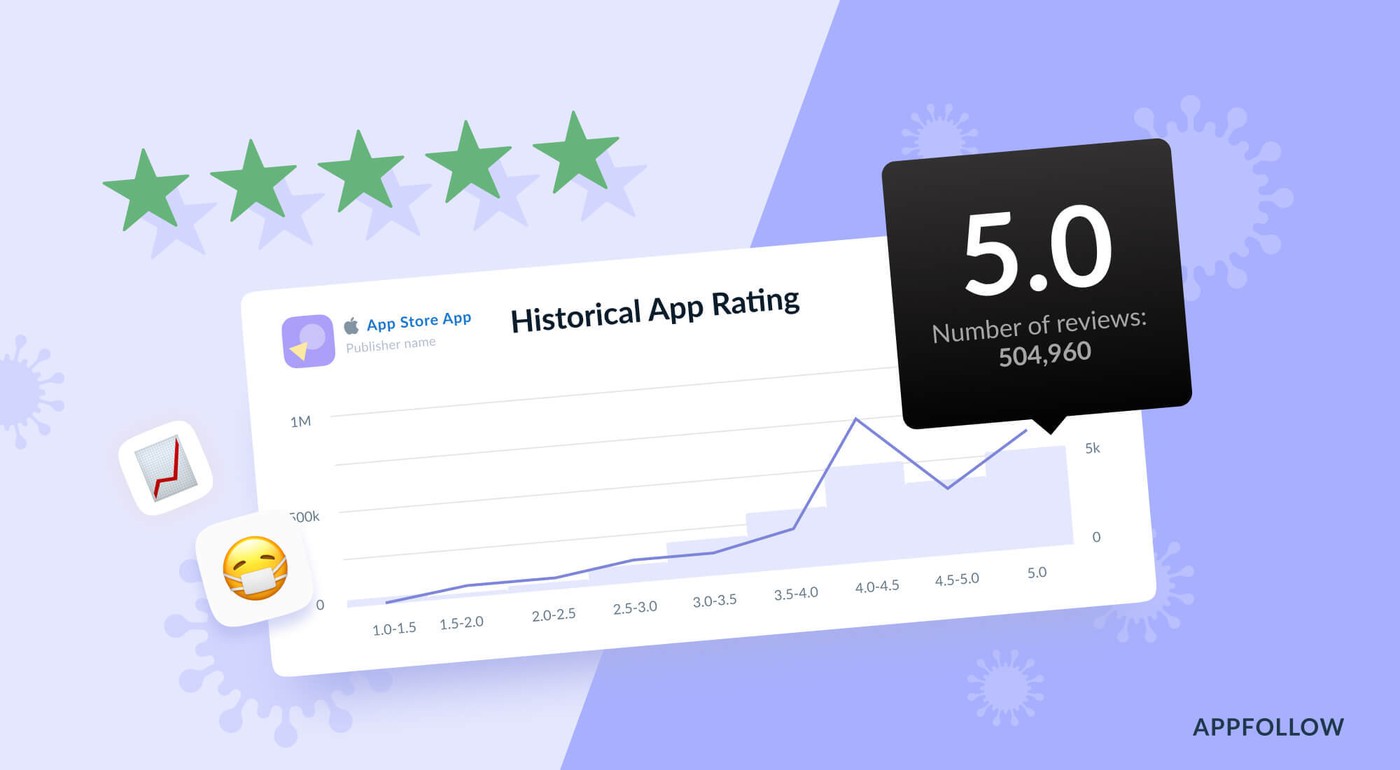How did ratings & reviews of popular apps change during COVID-19?

Table of Content:
As the novel coronavirus pandemic continues to threaten lives, businesses around the world too are facing a major crisis situation, with many going bust. The stock markets are haywire, millions are unemployed, and financial hardship is prevalent.
Practically every industry is affected by the ongoing COVID-19 crisis as it continues to wreak havoc across the globe. For instance, tourism is a major driver of jobs and growth for almost all national economies. But the pandemic has destroyed this sector, negatively affecting people’s lives.
The same goes for retail, entertainment, and automotive sectors that have come to a near standstill. On the other hand, sectors such as EdTech have taken this as an opportunity to evolve by offering accessible distance education and remote learning for everyone.
As a consequence, some of the popular apps (in various niches) in the app markets have also witnessed fairly noticeable changes. This includes changes in their ratings and reviews which are critical in determining business success.
In this post, I am going to share how the pandemic has impacted ratings of popular apps. But, before we dive into, let’s understand their significance.
Why App Reviews and Ratings Matter
According to Statista, in 2019 alone more than 204 bn apps (Apple App Store and Google Play combined) are fighting for user attention. In such a cut-throat environment, only apps with the best ratings can help users decide on the one that meets their needs. Thus, ratings and reviews are critical in influencing potential users to download the app, thus impacting its long-term success.
In fact, a report by Apptentive shares that 79 percent of users check an app’s rating before installing it.
This graph by 42matters clearly shows that apps with higher ratings have a high download volume.

Mobile app reviews and ratings determine an app’s visibility, influence purchasing behavior, and boost conversions, ultimately improving its online reputation. Therefore, it’s wise to pay attention to the reviews you users are writing and also create opportunities for them to leave feedback.
Now, let’s take a quick look at these changes of five popular apps.
Health and Fitness: Strava
For fitness enthusiasts, Strava is one of the most popular and top-rated apps on the Apple and Android marketplaces. But its ratings and reviews took a downturn in the last two months, as you can see below.

The apparent reason for this substantial drop in ratings is that they “moved a few free features into the subscription to ensure Strava is around for years to come”.

In other words, they suddenly started charging for features that were originally free. That’s precisely what most users shared in their review about the app. Many long-time app users were disappointed and even ditched the app altogether.
Entertainment: TikTok
Launched not very long back (later half of 2016), TikTok is a video-sharing social media platform that has taken the world by storm with over 800 million monthly active users. It is available in more than 150 countries and is the most downloaded app of 2020.

Here’s how it fared in terms of ratings and reviews during these troubled times of COVID-19.

As you can see, the ratings suddenly dropped from high 4 stars to as low as 1.2 within a matter of weeks on the Google Play Store. This was largely due to a dispute between local YouTube creators and TikTok influencers in India, along with the fact that TikTok videos have often promoted violence, animal abuse, racism, child mistreatment, and sexual harassment.
Recently, however, Google removed millions of one-star ratings and reviews due to its comment posting guidelines that prevent a mass negative attack on an app, bringing the ratings back up to 4.4 stars.
Business: Zoom
The already growing trend of remote working was furthered by the pandemic, forcing all businesses to join in the world’s largest work-from-home experiment. Tech giants like Apple and Google themselves have readily transformed into fully remote companies and plan to continue operating from home for as long as they can.

And so, naturally, video conferencing apps have seen a surge in usage, one of the most popular ones being Zoom. Its ratings have seen a consistent uptick since the coronavirus outbreak.

Daily downloads of the Zoom app have increased 30x year-over-year. In fact, Zoom has been the top free app for iPhones in the United States since March 18. Zoom shared that their daily users spiked to 200 million in March 2020 from 10 million in December 2019 .
Navigation: Waze
With remote work booming in the last few months, traditional offices and modern coworking spaces have had their share of empty aisles. In a majority of countries, people have largely remained indoors due to lockdowns being imposed for arresting the further spread of the pandemic. Consequently, popular navigation and live traffic apps like Waze have seen a little-to-no change in user reviews and ratings.


However, their latest “bug fixes” have caused issues for a few users, resulting in a slight downtick in ratings. Overall, Waze has maintained its supremacy as a GPS and navigation app and is still at par with Google Maps.
News: Flipboard
While there are many great news apps today, Flipboard has been around as a default for Android for some time. With interesting features like its image-heavy, magazine-style layout, Flipboard is one of the first apps to make reading the news less boring .
But during these COVID-19 times, the love for this old favorite app seems to have declined.

As you can see in these reviews, their latest updates haven’t been received well, with many users reporting frequent app crashes, bad navigation, too many ads, and content being hidden behind paywalls.

It’s not surprising, therefore, that Flipboard’s ratings have plummeted so heavily in the last couple of months.
Education: Duolingo
As mentioned earlier, the pandemic has helped the educational technology industry by forcing students and teachers to adapt to distance education with video conferencing tools and apps. It has also promoted remote learning for hobbyists and working professionals. Duolingo is an extremely popular language learning app and as expected, it has witnessed some positive changes in its reviews and ratings in the last two months.
Clearly, the reviews and ratings of this famous language learning app have steadily increased. People have time and are more receptive to learning during this lockdown, encouraging them to take up a language they always wanted to. And with its fun, bite-sized lessons and intuitive user interface, Duolingo has grown well during this period. Their ratings and reviews say it all!

Final Thoughts
As you can see, along with the offline impact of COVID-19 on various industries, popular apps have also observed ups and downs in their ratings and reviews, worldwide. These changes could be due to the differences in the way apps are now being used, a “broken” update (as in the case of Flipboard), or a new pricing policy (like Strava).
Regardless of the factors influencing this change, as an app entrepreneur or developer, it’s critical that you monitor such changes so that you can quickly identify and fix issues. This will not just improve your app store rankings but also boost user satisfaction, strengthening your stand in the industry.



